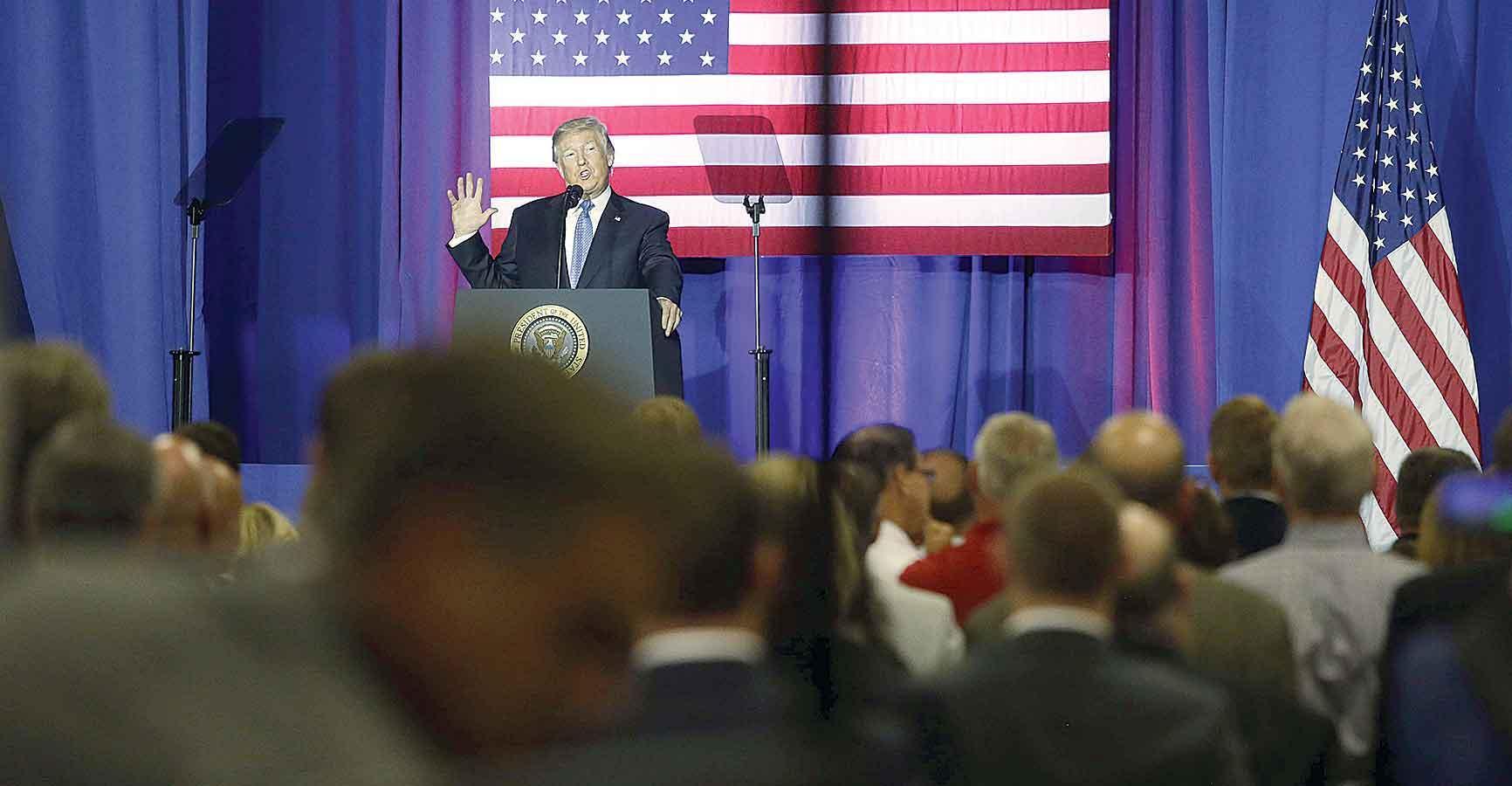
U.S. President Donald Trump proposed on Sept. 27 the biggest U.S. tax overhaul in three decades, calling for tax cuts for most Americans, but prompting criticism that the plan favors business and the rich and could add trillions of dollars to the deficit.
The proposal drew a swift, skeptical response from Senator Bob Corker, a leading Republican “fiscal hawk,” who vowed not to vote for any federal tax package financed with borrowed money.
“What I can tell you is that I’m not about to vote for any bill that increases our deficit, period,” Corker, who said on Sept. 26 he would not seek re-election in 2018, told reporters.
Trump said his tax plan was aimed at helping working people, creating jobs and making the tax code simpler and fairer. But it faces an uphill battle in the U.S. Congress with Trump’s own Republican Party divided over it and Democrats hostile.
The plan would lower corporate and small-business income tax rates, reduce the top income tax rate for high-earning American individuals and scrap some popular tax breaks, including one that benefits people in high-tax states dominated by Democrats.
Forged during months of talks among Trump’s aides and top congressional Republicans, the plan contained few details on how to pay for the tax cuts without expanding the budget deficit and adding to the nation’s $20 trillion national debt.
The plan still must be turned into legislation, which was not expected until after Congress makes progress on the fiscal 2018 budget, perhaps in October. It must then be debated by the Republican-led congressional tax-writing committees.
Analysts were skeptical that Congress could approve a tax bill this year, but that is what Republicans hope to achieve so they can enter next year’s congressional election campaigns with at least one legislative achievement to show for 2017.
Financial markets rallied on the plan’s unveiling, an event long anticipated by traders betting that stocks would benefit from both faster economic growth and inflation.
At an event in Indianapolis, Trump called the plan the largest tax cut in U.S. history.
The dollar and global borrowing costs rose on Sept. 28 after Trump proposed the tax plan and strong data supported the case for another Federal Reserve rate hike later this year.
The dollar’s strength pressured many emerging market currencies and commodities, but Europe’s main stock markets gave Trump’s blueprint the cautious thumbs up after Wall Street and Japan’s Nikkei had gained overnight
‘Pro-American tax plan’
“We want tax reform that is pro-growth, pro-jobs, pro-worker, pro-family and, yes, tax reform that is pro-American,” he said.
The real estate mogul-turned-politician, who promised big tax cuts as a candidate, told reporters he personally would not gain financially from the proposal.
“I think there’s very little benefit for people of wealth,” said Trump, who unlike many of his White House predecessors, has refused to make public his own tax returns.
Republicans have produced no major legislative successes since Trump took office in January, even though they control the White House and both chambers of Congress. Their top legislative priority, overhauling the U.S. healthcare system, collapsed again in the Senate on Sept. 26.
A comprehensive rewrite of the U.S. tax code has eluded previous presidents and Congress for decades. The last one was passed in 1986 under Republican President Ronald Reagan.
Trump’s plan falls short of the sweeping, bipartisan package crafted by Reagan and congressional Democrats, analysts said.
The White House said that, under the proposal, typical middle-class families would have less income subject to federal tax. Trump said the first $12,000 earned by an individual and the first $24,000 by a married couple would be tax-free.
The plan would lower the top individual tax rate, paid by the nation’s top earners, to 35 percent from 39.6 percent.
It would lower the top corporate income tax rate to 20 percent from the current 35 percent. The existing rate is high globally, but many U.S.-based multinationals pay much less than the headline rate because of abundant loopholes and tax breaks.
Trump has appealed to Democrats to back the plan, although they were not consulted in drafting it.
Republicans hold a thin 52-48 Senate majority and may need some Democratic support to win passage. But Democrats said the plan would expand the federal deficit in order to deliver tax cuts to wealthy Americans rather than the middle-class families that Trump and Republicans say they are trying to help.
The Committee for a Responsible Federal Budget, a Washington-based policy group, estimated on Sept. 27 the plan contained about $5.8 trillion of total tax cuts over a decade and would have a net cost of $2.2 trillion through 2027.
Warnings on potential deficit
Analysts have warned huge tax cuts would balloon the deficit if economic growth projected by Republicans to offset the costs fails to materialize amid rising interest rates.
The plan would set a new 25 percent tax rate for “pass-through” businesses, which are usually small, private enterprises, such as partnerships and sole proprietorships. They represent about 95 percent of all U.S. businesses.
Under current law, the profits of those companies “pass through” directly to their owners and are taxed as personal income, often at the top 39.6 percent individual income rate.
Cutting that to 25 percent could mean big tax savings for small-business owners, but also be vulnerable to abuse by other individuals and companies, analysts said.
Republicans proposed eliminating some tax deductions. They did not target the popular ones for mortgage interest and charitable giving, but called for scrapping the one for state and local tax payments. That could especially hurt people in high-tax states like California and New York.
In a step to simplify tax returns, the plan would shrink the current seven tax brackets to three: 12 percent, 25 percent and 35 percent. That would raise the bottom tax rate on low-earning Americans to 12 percent from 10 percent, but analysts said other parts of the plan would still mean a net tax cut.